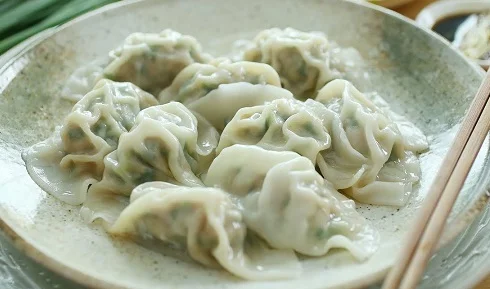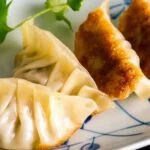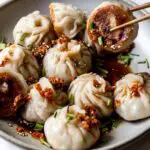Dumplings are a delectable treasure of culinary art, a beloved staple across various cultures worldwide. Whether they’re from China, Italy, Poland, or any other corner of the globe, the key to enjoying dumplings lies in their correct preparation and storage. Ensuring their texture remains appealing and their flavor is preserved is critical. In this article, we’ll guide you on how to cook and store dumplings properly, letting you savor these delightful parcels of joy at their best.
Let’s start with the cooking process. Cooking dumplings can be an exciting culinary adventure. When done correctly, you get to enjoy a little piece of heaven with each bite. Here are some tips on how to properly cook dumplings:
Steaming dumplings:
For those who appreciate a delicate, slightly chewy texture, steaming is the way to go. The crucial factor here is not to overcrowd the steamer. Make sure you leave enough space between each dumpling to prevent them from sticking together. Steam for about 15-20 minutes, or until they’re firm and slightly translucent. Keep the heat consistent but not too high, as extreme heat can break the dumpling wrappers.
Boiling dumplings:
When boiling dumplings, do not throw them all in the pot at once; instead, add them gently one by one. Stir lightly with a wooden spoon to prevent sticking. When the dumplings start to float, they’re done. An important tip – a low boil is better than a rolling boil to keep the dumplings intact.
Pan-fried dumplings:
This method creates a crispy bottom that contrasts beautifully with the soft, steamed top. To achieve this, fry the dumplings in a hot pan with some oil until the bottoms turn golden brown. Add a few tablespoons of water, then cover the pan and let the dumplings steam until the water evaporates.
Once you’ve mastered the art of cooking dumplings, the next big thing is storing them properly. When done correctly, storage can help preserve the texture and taste of your dumplings.
Freezing Uncooked Dumplings:
You can freeze uncooked dumplings by arranging them in a single layer on a baking sheet, ensuring they’re not touching. Place the sheet in the freezer for a few hours until the dumplings are frozen solid, then transfer them to a freezer bag or container. This method keeps the dumplings from sticking together and helps maintain their shape and flavor for up to three months.
Refrigerating Cooked Dumplings:
Cooked dumplings can be stored in the refrigerator for a few days. Make sure they’re cooled down before placing them in a container with a tight-fitting lid. When ready to eat, you can steam them until they’re hot, or pan-fry for a crispy exterior.
Freezing Cooked Dumplings:
For longer storage, cooked dumplings can be frozen. Allow them to cool down, then freeze in a single layer on a baking sheet before transferring to a freezer bag. Reheat them directly from frozen, either by steaming or pan-frying.
It’s essential to maintain the quality of dumplings to fully enjoy their unique flavor and texture. With these tips on how to cook and store dumplings, you can ensure they remain tasty and texturally pleasing. Whether you’re a novice or a seasoned chef, these steps will enhance your dumpling experience.
Remember, the most important ingredient in any dish is love. So, pour your heart into the process, be patient, and enjoy every step.
Let’s talk about reheating dumplings now. The best way to reheat your stored dumplings will depend on how they were originally cooked and how they were stored.
Reheating Steamed or Boiled Dumplings:
The easiest way to reheat steamed or boiled dumplings is by steaming dumplings from frozen again. Place them in a steamer basket without overcrowding them and steam until they’re hot, usually for about 5-10 minutes. This method ensures the dumplings retain their original flavor and texture.
Reheating Pan-Fried Dumplings:
Pan-fried dumplings can be reheated by frying them again. Simply heat a pan with some oil and place the dumplings in it, frying until they’re hot and crispy. This will restore their crispy bottom while keeping the rest of the dumpling tender.
Reheating Frozen Dumplings:
Reheating frozen dumplings is a breeze no-matter if you made them yourself or they were brought as pre-made dumplings. There’s no need to thaw them; you can directly steam or pan-fry them until they’re heated through. The dumplings will retain their delightful texture and rich flavor, just like when they were freshly made.
Making, storing, and reheating dumplings might seem a bit daunting, especially if it’s your first time. But, with these tips and a little bit of practice, you’ll be enjoying homemade dumplings whenever the craving strikes.
Remember, the essence of cooking lies not just in the ingredients or the methods but in the love and passion you put into the process. Enjoy each step of making your dumplings, from the careful preparation to the rewarding taste of your finished product. As you bite into your perfectly cooked and stored dumplings, take a moment to appreciate the blend of textures and flavors, and the culinary journey you’ve embarked on.
So, roll up your sleeves, put on your chef’s hat, and get ready to delve into the world of dumplings. Happy cooking, storing, and eating!





